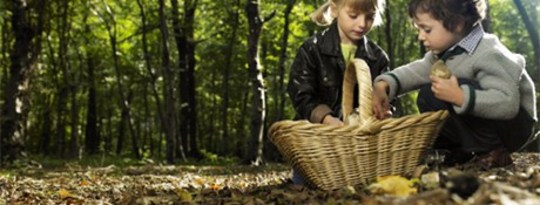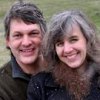
Over the past decade, we have spent a lot of time getting to know our local area. We like to take leisurely strolls through the paths in the woods with our children and dogs, and when we stroll, we pay attention to what we see growing.
Once we decided to really make foraging a part of our life rather than just some summer-day hobby, like picking trail nibbles when on a hike, we became keenly aware of how little we really knew. We realized that there will always be more to learn about local plants and we will never know everything, even about the plants we already forage.
Some things that we have done right, however, can help others who might be interested in starting to forage.
I. There is no such thing as too many books.
Get The Latest By Email
A book devoted to foraging will have three basic pieces of information that are invaluable to a forager: how to identify the plant, how and when to harvest the plant and how to use the plant as food.
When it comes to foraging, one cannot be too careful. While there are not nearly as many poisonous plants as we might believe, there are a few. It is wise advice to err on the side of caution: if one is not 100 percent sure, do not eat it, which is why we also like to consult other books.
II. Always check three sources when trying to identify a plant.
With all our books on wild edibles, medicinal plants and so-called weeds and trees, we probably could find three very different resources to help us verify the identity of a plant we have found, but we also like to cross-reference these discoveries using the Internet.
We research very carefully to be certain about what we have before we eat it. The other benefit to consulting several references is that different wild edibles books will give us varying ways to use the plant, resulting in a broader range of culinary possibilities.
III. Finding a teacher or a mentor can come in very handy.
Over the years, we have been incredibly fortunate to have many foraging teachers. As we became more knowledgeable, we seemed to find teachers who did not just walk through a field, point to a plant and give it a name, but rather were very careful to ensure that we were really learning to see the plants as distinct and individual.
IV. Take lots of notes.
Of course, that advice extends beyond the expert walks and into our own forays into the suburban wilds around our home. Keeping a journal of the plants we find, including making some drawings, or snipping a bit of the plant to press into the pages has helped us on a few occasions to identify plants. Writing down what we see when we are out, or even just where we went on a particular day, can be valuable information later. Sometimes our journal is not writing on a page but pictures of a particular area.
The journal can also be a very good tool, especially the pictures, for showing us what a particular plant might look like through its life cycle, which is very important to know because some plants are edible as young shoots but if eaten later will make one very sick. Getting to know the plant through its entire progression from spring shoot to fall seed gives a whole picture.
V. Learn one or two plants in a season.
 With so many plants to know, and so many that start out looking like others, the best thing a novice forager can do is to learn one or two plants in a season. We spent too much time poring over volumes of foraging books and trying to memorize every plant that we might see in a given season.
With so many plants to know, and so many that start out looking like others, the best thing a novice forager can do is to learn one or two plants in a season. We spent too much time poring over volumes of foraging books and trying to memorize every plant that we might see in a given season.
Finally, we stopped trying to know everything through some magic of osmosis, and we started the real work of learning about those we hoped to eat. We slowed down, and we concentrated our efforts on learning one or two plants in a season.
VI. Ask questions.
Even in the confines of our own homes, we can ask questions. They can lead to further research in books or online, but can also result, through careful consideration, in deep understanding. Question the type of soil in which a plant grows, or the time of year it blossoms, or the types of insect it attracts.
VII. Keep a calendar, or historical time line, of the progress of the environment as a whole.
As spring wends its way to summer, summer to fall and back through winter, different plants will sprout, bloom and fruit at their own rates. Animals, and insects, will follow suit in concert with those plants they eat. Keeping a record of bird sightings, or flowers blooming or shoots breaking through the soil allows one to keep time with the rhythm of the natural world. Over time, one can develop an intuitive feel for this rhythm as it shifts from season to season.
VIII. Heed the Rule of Thirds.
Forager’s Rule of Thirds:
1) Take one-third;
2) Leave one-third for others;
3) Leave one-third for the future.
The Rule of Thirds is one of the most important things to learn when beginning to forage, because it is so tempting to harvest everything. If one falls victim to this urge, the hunt will need to begin anew the following year with the search for a new source.
Following this rule, one encourages the plants, or animals, to grow stronger and healthier. It also leaves the forager with the knowledge of where a particular food may be found, and it leaves the environment healthy by encouraging biodiversity. One should not look out solely for one’s own benefit, but for the benefit of all of the beings with whom we live.
©2013 Wendy Brown & Eric Brown. All Rights Reserved.
Reprinted with permission of the publisher,
New Society Publishers. http://newsociety.com
This article was adapted with permission from the book:
Browsing Nature's Aisles: A Year of Foraging for Wild Food in the Suburbs
by Wendy and Eric Brown.
 As part of their commitment to self-reliance and resiliency, Wendy and Eric Brown decided to spend a year incorporating wild foods as a regular part of their diet. With information on collecting, preparing, and preserving easily identifiable wild edibles found in most suburban landscapes, this unique and inspiring guide is a must-read for anyone who wants to enhance their family's food security by availing themselves of the cornucopia on their doorstep.
As part of their commitment to self-reliance and resiliency, Wendy and Eric Brown decided to spend a year incorporating wild foods as a regular part of their diet. With information on collecting, preparing, and preserving easily identifiable wild edibles found in most suburban landscapes, this unique and inspiring guide is a must-read for anyone who wants to enhance their family's food security by availing themselves of the cornucopia on their doorstep.
Click here for more info and/or to order this book on Amazon.
About the Authors
 Eric and Wendy Brown are suburban homesteaders growing roots (both literally and figuratively) in Southern Maine. They have been studying wild edibles for many years. Until 2005 their family was living the American Dream, complete with credit card debt, car payments and two mortgages. Concerns about the environment, Peak Oil, and the economy combined with a growing desire to live a more self-sufficient life caused them to reevaluate and redesign their lives. The result has been a transition from a completely dependent, consumerist lifestyle to one of living debt-free in a comfortable, more energy efficient home in a desirable location with a bountiful garden.
Eric and Wendy Brown are suburban homesteaders growing roots (both literally and figuratively) in Southern Maine. They have been studying wild edibles for many years. Until 2005 their family was living the American Dream, complete with credit card debt, car payments and two mortgages. Concerns about the environment, Peak Oil, and the economy combined with a growing desire to live a more self-sufficient life caused them to reevaluate and redesign their lives. The result has been a transition from a completely dependent, consumerist lifestyle to one of living debt-free in a comfortable, more energy efficient home in a desirable location with a bountiful garden.









